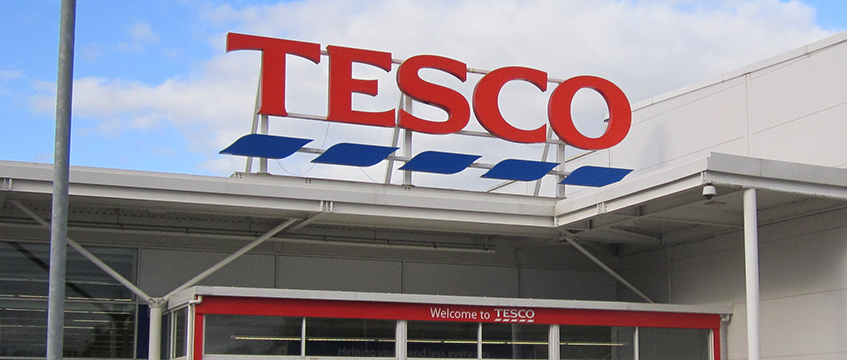Tesco is looking at acquiring more freehold sites in a drive to save cash by reducing its exposure to inflation-driven rent reviews.
The supermarket group has ended its 20-year joint venture with British Land, giving Tesco full control of the remaining assets in the partnership. This will give Tesco more control of its estate and reduce its rent roll in areas where it wants to stay for the long-term.
Seven stores, valued at £219m in total, make up the last of the former joint venture, known as BLT Properties, and include supermarkets in Ashford, Bristol, and Nottingham.
Tesco has bought BL’s 50% share of these assets, giving it sole ownership of the superstores for which it was paying British Land rent with inflation-linked increases. The sites are all in well-performing prime areas and range in size from 70,000 to 100,000 sq ft.
Regaining control
Tom Edson, head of out-of- town retail at Colliers International, said: “This gives Tesco the opportunity to gain control of stores where the open market value and rent passing through them has been high. The retailer is in a price war and so needs to control its rents where it can.”
Tesco did a similar deal with British Land in 2015, taking 21 superstores that were owned in the venture as part of a £733m property swap deal: British Land took over Tesco’s stakes in three shopping centres, three retail parks, and three standalone stores in exchange for the supermarket freeholds.
In the financial year to the end of March, Tesco increased the proportion of freeholds in its portfolio from 54% to 57%. This number is expected to rise steadily.
Tesco has been working hard to overhaul its store portfolio in a bid to make its business more profitable. An aggressive expansion drive in the early 2000s left the supermarket with too many unprofitable stores. As a result, it closed 43 shops including seven superstores and 30 convenience stores and abandoned a series of development sites in 2015.
Although the supermarket has few remaining joint ventures that would offer a similar opportunity, it is likely that it will continue to consider further acquisitions either as open market acquisitions or purchases of supermarkets that have been part of sale and leaseback portfolios with buy-back clauses.
In these instances Tesco can buy back either the leased asset or the equity if held in a joint venture, at market value and at a specified date. According to the company’s latest results, the current market value of all its properties that could be bought back in this way is £2.9bn.
Shore Capital’s Clive Black said: “Tesco has a lot of debt and around £7.5bn of operating leases. The board is trying to reduce exposure to these and is buying them in where it can. It requires an additional amount of capital, but on the flip side it reduces rent roll and eases operational gearing. We expect them to do more of this in the UK, but it is almost impossible to predict when.”
Freehold buy-backs
Last year Tesco acquired 16 freehold sites, most of which were acquired through the buy-back clauses in sale and leaseback deals entered into between 2000 and 2010.
However, when current chief executive Dave Lewis took the helm in 2014, the group’s rent bill had risen to £1.4bn a year.
Notable deals last year include Tesco’s £53.7m buy-back of its Shrewsbury Tesco extra in Shropshire and another store in Burgess Hill, Essex, that was valued at £70m. Both were owned by Standard Life Investments.
In its latest results the retailer said the deals had resulted in an annualised saving of £152m in rent and increased the group’s owned portfolio value by £200m to £19.9bn.
Tesco’s buy-backs: what’s hot, what’s not
Tesco is most likely to buy back stores ranging in size between 70,000 and 100,000 sq ft where it has a buy-back option on previous sale-and-leaseback arrangements.
Tesco has been struggling against competition in the convenience store sector and would be unlikely to buy any convenience store freeholds.
Its Tesco extra format, which can be as large as 185,500 sq ft, has proved similarly challenging and it is generally less likely to buy these back. In the growing age of e-commerce, the supermarket has struggled to make efficient use of all the surplus space in its large-format shops, as customers opt increasingly for smaller, more convenient locations.
Tesco stores remaining in the BLT estate
| Store location | Size (sq ft) |
|---|---|
| Ashford, Kent | 98,000 |
| Barnstaple, north Devon | 71,000 |
| Brislington, Bristol | 104,000 |
| Bulwell, Nottingham | 107,000 |
| Newton Abbot, Kingsteignton | 74,000 |
| Pontypridd, Wales | 112,000 |
| Feltham, Hounslow | 74,000 |
To send feedback, e-mail amber.rolt@egi.co.uk or tweet @AmberRoltEG or @estatesgazette











